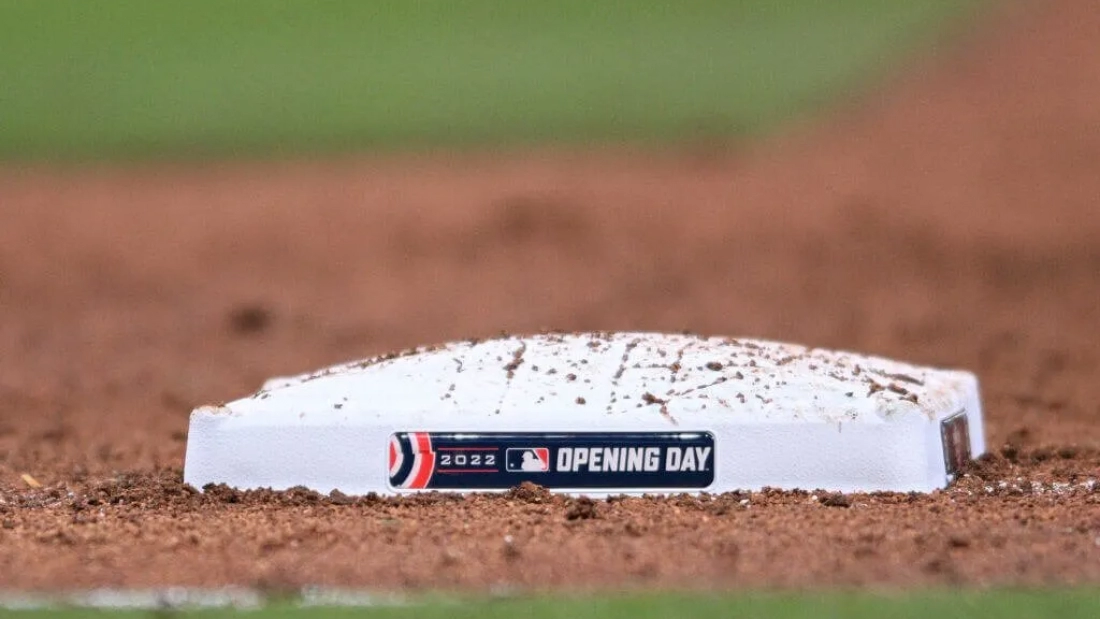
Say it with me: THE SHIFT IS DEAD, THE SHIFT IS DEAD! Major League Baseball announced its official rule changes that are coming in the 2023 season. These rules have been througouhly tested in the Minor Leagues over the past few seasons, and now they’re making their way up to the big leagues.
There have been a few rule changes since COVID forced the MLB’s hand, specifically the runner-on-second-to-start-extra-innings Rule, and the universal DH. The runner-on-second rule doesn’t take place in the playoffs, thankfully, but I was a huge advocate for the universal DH for years, it’s something the game desperately needed.
Let’s break down the rule changes for 2023 one by one, starting with:
Larger Bases
This one is strictly for player safety, so not much to say. The bases get a boost from 15 square inches to 18 square inches, allowing the First Baseman more room between himself and the runner. The only thing that really changes are close plays, anytime you see a runner this year beat out a throw by a split second, that result is most likely now in favor of the defense due to the extra three inches of base the First Baseman has to stretch from. Overall, not much to complain about.
Pitch Clock
The pitch clock has proven to shave off anywhere from 15-30 minutes of game time in the minors. No idea if that will directly translate to the MLB, but regardless, I don’t care for it. Yes, pace of play will pick up, but you’re not drawing in any new fans with this. I’m mostly concerned about how this will effect teams come playoff time. Whether fans like it or not, pace of play between a pitcher and hitter is a mental game, at times. And it’s used to throw off each others rhythm. Again, the regular season might not prove to be a big deal, but if this is implemented in the playoffs, it could prove to disrupt a lot of players.
Defensive Shift Ban
This is the big one, and boy did it cause an argument between me and a few friends. Starting next year, all infielders must be on the infield dirt when the pitcher is on the rubber, and there must be two infielders on both sides of second base. Additionally, you can’t shift your best defender from, say, Third Base, to the right side because thats where you expect the ball to go.
I will present to you both sides of the coin, and you can decide for yourself.
Option One: It hurts the game because it allows hitters to be one-dimensional, rather than force them to become a well-rounded hitter.
This was one of my friends, he claims that by eliminating the shift, bad hitters can continue to be bad and are “rewarded” for not being able to go the opposite way, or lay down the occasional bunt to keep the defense honest. It’s a point that I certainly understand, but one I don’t agree with. We have seen pull hitters all our lives, but its only the past 10 years that the shift has gotten to the point where you’re putting out four outfielders, its ridiculous. I do, however, think it would absolutely benefit a hitter to go to all fields, of course.
Option Two: It grows the game because it allows for more action, and you can’t shift anyone. Forget about the strict pull-hitting lefties, guys like Jeff McNeil are getting shifted up the middle because they are so good. A line drive up the middle shouldn’t be a 4-3 putout.
This is the side of the fence I fall on. At its most basic point, this rule change allows more balls put in play to be singles, rather than a groundout. Call me old fashioned, but if a pitcher lays a duck and the hitter sends a line drive to right with a 108mph exit velo, that shouldn’t result in a groundout because it one hopped to the second baseman who is playing in shallow right field, it should be a single!
Very excited to see how the shift plays out for hitters. Batting .300 is so rare nowadays, only a handful of guys are doing it, hopefully that changes. Team averages should go up as well, I don’t think its going to be anything drastic, but it should improve nonetheless.
Let me know your thoughts on Twitter!




Leave A Comment